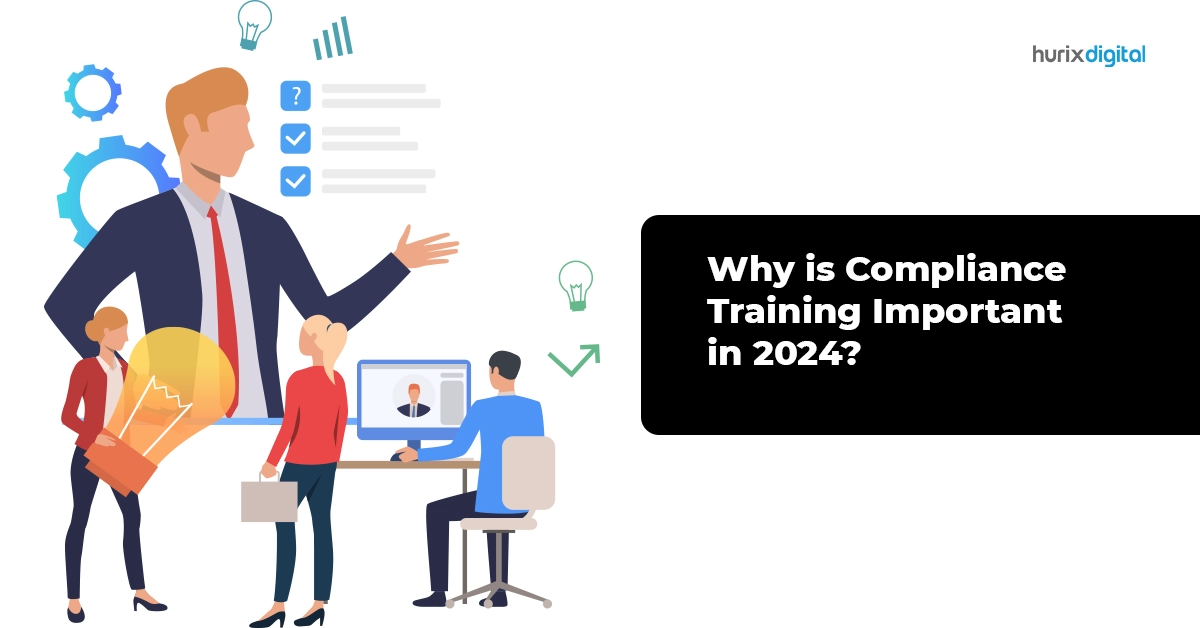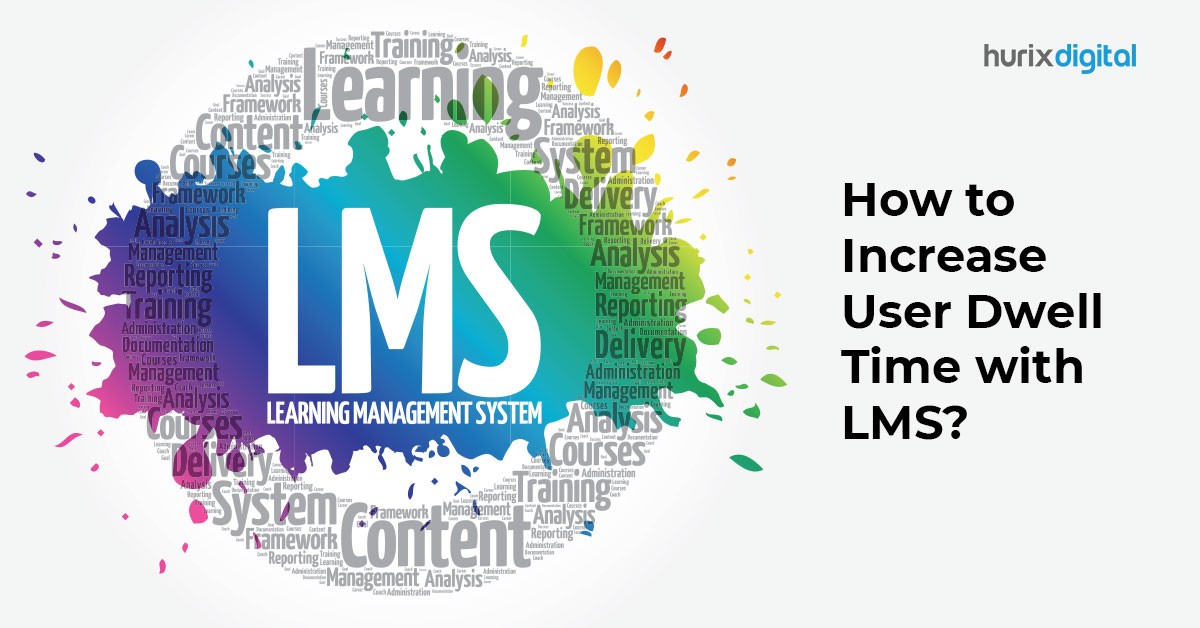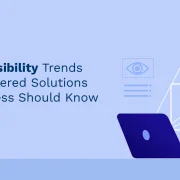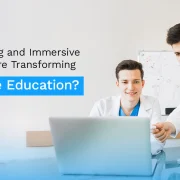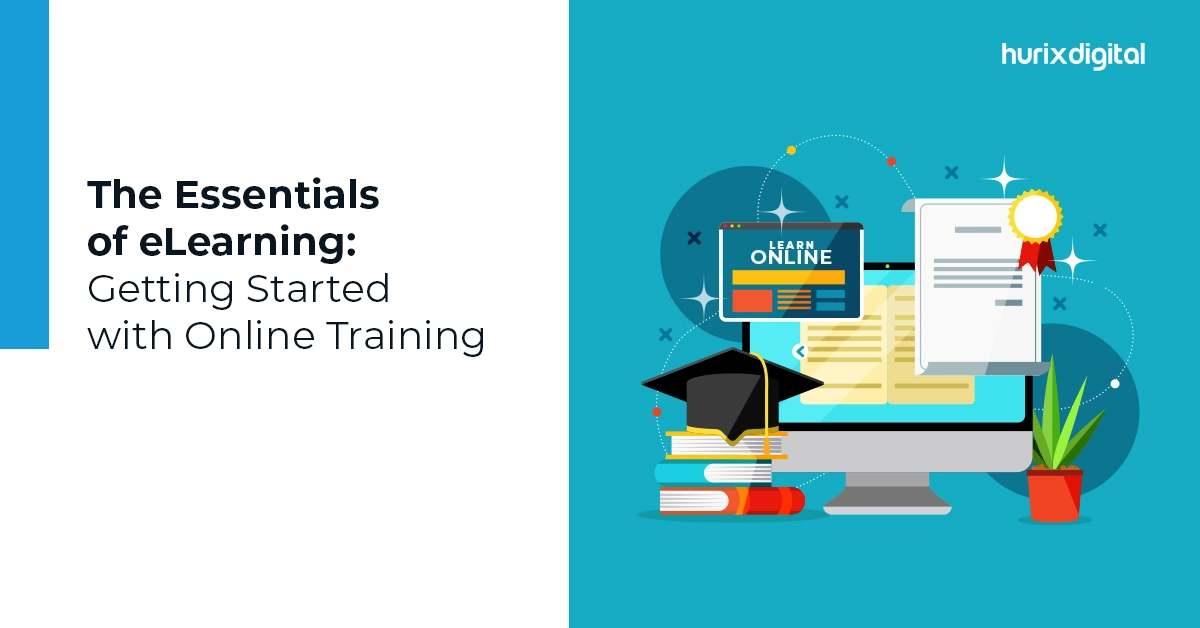
The Essentials of eLearning: Getting Started with Online Training
Summary
This guide discusses eLearning in workforce training, covering online modules, enterprise components, implementation, and employee performance tracking for continuous development.
The educational landscape is undergoing a seismic shift. The traditional classroom, once the bedrock of learning, is steadily challenged by the ever-growing prominence of online learning platforms.
This evolution extends to corporate training, where eLearning is rapidly reshaping how businesses equip their workforce with the skills and knowledge to thrive in today’s dynamic environment.
Table of Contents:
- What is eLearning?
- The Significance of eLearning in Corporate Training
- Best Practices for eLearning Implementation
- The Bottom Line
What is eLearning?
eLearning, short for electronic learning, encompasses any form of training or education delivered through electronic devices. It includes a vast spectrum of educational experiences delivered electronically, accessible through computers, tablets, and even smartphones.
From interactive quizzes that test understanding to informative articles that illuminate concepts, eLearning encompasses any method of knowledge transfer facilitated by digital resources.
Also Read: How Smart eLearning Solutions Boost Your Compliance Training in the Finance Sector
The Significance of eLearning in Corporate Training
The current business environment, defined by constant change, necessitates emphasis on ongoing workforce learning and growth. Companies are investing heavily in personnel training, yet many struggle to see significant progress. With its unique set of benefits, eLearning fills the gaps left by traditional training approaches.
- Accessibility and Flexibility: eLearning modules eliminate the constraints of time and location. Employees can access training materials and complete courses at their own pace, seamlessly integrating learning into their busy schedules. This flexibility is particularly valuable for geographically dispersed workforces or those with demanding schedules.
- Consistency: Online training modules ensure uniformity in content delivery. Every employee receives the same up-to-date information, a critical factor in industries with strict compliance and regulatory requirements.
- Engagement: The interactive nature of eLearning facilitates an engaging learning experience, boosting knowledge retention and overall effectiveness.
- Addressing Dynamic Skill Demands: The variable nature of the modern workplace demands a dynamic and adaptable approach to employee development. eLearning modules rise to this challenge by providing a readily accessible library of online courses. Employees are encouraged to continuously acquire new skills and knowledge, ensuring they stay ahead of industry trends and remain prepared for the evolving demands of the job market.
- Global Collaboration: eLearning platforms shatter geographical barriers, creating an interconnected global learning community. It fosters collaboration and knowledge sharing among employees worldwide, enriching them with diverse perspectives and enhancing cross-cultural communication skills. The global exchange cultivates an adaptable and well-rounded workforce prepared to thrive in an international marketplace.
Best Practices for eLearning Implementation
This guide innumerates a framework specifically designed to ensure learner motivation and drive eLearning acceptance throughout your company.
1. Creating a Learner-Centric Design
Effective eLearning hinges on a deep understanding of your target audience—your employees. Successful programs prioritize the needs, goals, and expectations of your learners, surpassing generic training modules.
- Learner Needs Assessment: Conducting surveys, focus groups, or one-on-one interviews can help you gain valuable insights into your employees’ learning preferences and existing skill gaps. Understanding their needs allows you to tailor eLearning content that addresses their challenges directly and fosters knowledge acquisition.
- Engaging Learning Experience: Catering to diverse learning styles is paramount. Develop a comprehensive workforce learning program incorporating various engaging formats, such as interactive modules, simulations, and microlearning opportunities. The multifaceted approach caters to different learning styles and preferences, maximizing engagement and knowledge retention.
- Building a Collaborative Team: A dedicated project team is vital for bringing your eLearning vision to life. This team should encompass:
- Project Lead: Appoint a project manager with a clear understanding of eLearning best practices and the authority to guide the initiative seamlessly.
- Subject Matter Experts: Include SMEs from relevant departments possessing the deep knowledge required to create accurate and insightful learning content.
- Instructional Designers: Leverage the expertise of instructional designers who can translate subject matter expertise into successful learning experiences.
- Stakeholder Representation: Involve stakeholders from various departments to ensure the eLearning program aligns with overall organizational goals and addresses departmental training needs.
- Executive Sponsorship: Securing buy-in from senior leadership is crucial. Engaging senior management fosters a culture of continuous learning within the organization and ensures the project receives the necessary resources and support to thrive.
2. Developing a Measurable Learning Journey
Having established your goals and assembled a skilled team, it is time to design a robust learning architecture meticulously. This stage involves:
- Needs Analysis Translation: Convert your identified needs and goals into a clear and concise learning architecture. This blueprint outlines the specific knowledge, skills, and attitudes (KSAs) your eLearning program will address, and the learning journey employees will undertake.
- Establishing Measurable Outcomes: A successful eLearning program goes beyond simply delivering content. Establishing clear Key Performance Indicators (KPIs) aligning with your initial strategic goals is vital. KPIs act as measurable markers that track the effectiveness of your eLearning program and its impact on employee performance.
Examples of relevant KPIs for corporate eLearning include:
- Learner Engagement: Track metrics such as course completion rates, time spent on modules, and participation in interactive activities.
- Knowledge Retention: Utilize post-training assessments to gauge employee comprehension and knowledge retention.
- Performance Improvement: Monitor how the eLearning program translates to on-the-job performance improvements. This might involve tracking key performance metrics specific to different roles.
- Return on Investment (ROI): Evaluate the financial impact of your eLearning program. It includes the cost of development and implementation compared to the benefits it generates, such as increased productivity or reduced training costs.
3. Creating Engaging Learning Experiences
Effective eLearning surpasses static presentations. To maximize learner engagement and knowledge retention, incorporate a variety of multimedia elements:
- Content Development: Leverage the expertise of your subject matter experts and instructional designers to supplement text-based instruction with engaging visuals such as infographics, animations, and job-relevant videos. This diversified approach caters to different learning styles and preferences, keeping learners actively involved in the learning process.
Consider incorporating diverse multimedia elements, such as videos, simulations, and interactive exercises, that cater to multiple learning styles and enhance comprehension. Integrate quizzes, polls, and simulations throughout the program. These interactive elements transform passive learning into active participation, facilitating deeper insight and application of the material. - Assessment Strategies: Integrate formative and summative assessments throughout the eLearning program. Formative assessments, such as quizzes and knowledge checks, provide real-time feedback and identify areas where learners might require additional support. Summative assessments, such as final exams or project-based tasks, evaluate overall knowledge acquisition and skill mastery upon program completion.
- Microlearning Modules: Break down complex topics into bite-sized, easily digestible modules. It allows learners to focus on specific areas at their own pace, optimizing knowledge absorption while minimizing cognitive overload.
4. Establishing Timelines and Resources
While pinpointing an exact timeline for eLearning projects can be challenging, understanding these factors can help create a realistic roadmap.
- Decision-Making Streamlining: Ensure all stakeholders involved in the eLearning project possess the authority to make timely decisions. It minimizes delays caused by lengthy approval processes.
- Vendor Selection Impact: Your chosen eLearning solutions significantly impact project timelines. Providers offering pre-built content and automated updates require less internal resource allocation, leading to faster deployment.
- Budgetary Considerations: eLearning costs vary depending on platform complexity and features. Consider the total cost of ownership (TCO) when budgeting. This includes:
- Platform Cost: The initial platform licensing fee.
- Maintenance Costs: Ongoing costs associated with updates and potential customization needs.
- Resource Allocation: Factor in the internal resources required to manage and populate the platform (content creation, user assignment). AI-powered solutions can automate some tasks, reducing resource allocation.
Also Read: A Complete Guide on eLearning Localization to Enhance Your Global Training Programs
The Bottom Line
The boundaries of knowledge are dissolving in the world driven by constant innovation, and learning is becoming a limitless pursuit. Organizations need agile eLearning solutions to equip their workforce for success, and traditional corporate training often fails to keep pace, leaving employees disengaged and ill-equipped for the evolving business landscape.
At Hurix Digital, we bridge the gap. We transform dry corporate training content into engaging learning experiences. Our team of experts crafts interactive courses, incorporates captivating elements like gamification and microlearning, and ensures accessibility through mobile-friendly design.
Our systems training integrates flawlessly with your workflows, empowering employees to learn right when they need it. Contact us now!


